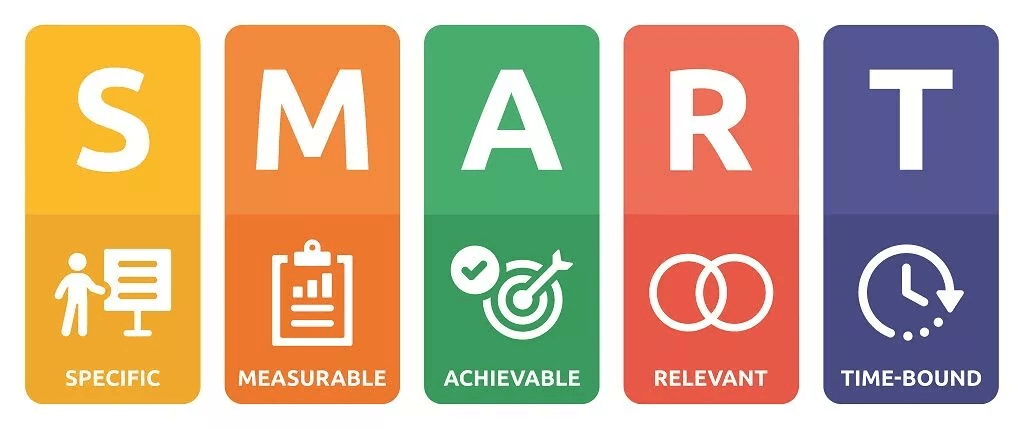In marketing, too many people skip the strategy and go straight into tactics and the do.
STOP!
However bold you might want your business to appear, a strategy is vital for your business’s survival and future scope. Without a strategy, you have no clear vision, no direction. Pinging senselessly from one tactic to another. Nothing genuinely lands as per your original intentions, and it’s making you mad!
Having a strategy allows you to leverage your strengths. You’ll take the time to work out where you position in the market, and you’ll be able to define your goals and objectives.
What makes up a good strategy?
A great strategy will give your business clarity, a set of clear goals and a framework that allows easy decision-making allowing you to be nimble and take action fast.

Why do many businesses fail to create a marketing strategy?
Often, there are many reasons why business owners fail to write or even think about a marketing strategy:
- Budgets are tight; we don’t have enough money to ‘do’ marketing
- We can’t articulate or agree on what is marketing
- We don’t know how to measure progress
How do I create a basic marketing strategy?

A basic marketing strategy is based on a three-prong framework:
- Identify if it is a business or marketing goal.
- Identify what problems your product or service is solving and who you are targeting.
- Give attention to purchase retention advocacy.
Business vs Marketing Goal
Your marketing strategy should begin with defining your overall business goals.
Essentially, it can be what we call ‘Ronseal’ – it does what it says on the tin. To set up tactics, you first need to consider what the end goal looks like.
Think about the challenges your business is facing. What are the desired outcomes you hope to achieve from your marketing activities? Consider and articulate these with your senior leadership team to ensure buy-in and future collaboration.
Don’t set too many objectives. One or two is good as it keeps you focused.
Are your goals marketing-related, i.e. increase sales of a particular product by 25%, or are they business related, grow profitability by 25%?
Small businesses often align their strategy to marketing goals, but neither is right or wrong.
Ensuring your brand is seen and recognised is vital for the overall success of your business. But how do you do that? Social media marketing is, of course, a great way for you to get your brand noticed, but it’s important to be mindful of your efforts.
By setting up SMART goals (Specific, Measurable, Achievable, Relevant, Time-Bound), you can determine what you want to achieve and measure your success using specific metrics.

By doing so, you start to work smarter. Avoiding the temptation to be on social, posting sporadic content because, well, just because. You are now thinking more smartly and measuring the return on your efforts.
Want to understand what your customers truly think about your brand or, indeed, what they need? Why not consider launching a telephone survey campaign, where you make 100 direct calls with ideal customers to find out what they need and, even more importantly, what they don’t want?

Taking the findings from these calls, you can create specific, actionable tasks that make a real difference to your business.
Your strategy should be strategic and tactical
It goes without saying that it should be strategic – it shares the same name, after all!
You’ve created your SMART goals, but now consider what you want to do with them. Start by focusing on your ideal customers’ problems. How can you help them? What communications can you create to help deliver the message that your product or service is right for them?
The most important step in effectively marketing your product or service is understanding the customer’s problem. It’s not about what you think they want or
need; it’s what the customer truly wants.

If you ever begin your comms or content with: “We’re excited to share our latest range of…” STOP!
You’re not thinking about the customer’s emotions. It’s great that you are excited and proud of your latest product launch, but are your customers? Probably not.
Find out what your customers want. Sit them down and ask them. What can we do to help you with the problem you are facing? By understanding their issues, you begin to speak their language.
Why not consider conducting some ethnographic research, where you watch a customer group using your product? You’ll then get to understand why they choose your brand over others.

Secondary sources like reviews can offer useful feedback to help you develop your customer proposition.
Often businesses place too much emphasis on demographics, believing you can only profile your customers by age, location and socioeconomic status. But that’s wrong. Segmenting by thought is way more useful. What thought does the customer have that prompts them to use your product? What drives them to buy from you? If you don’t know, ask.
The importance of positioning

When did you last stop to consider your company’s positioning? Positioning is building a vision in the mind of your customers. Working out ways to help them
understand who you are and what you do. In other words, working out ways to stand out from the crowd and to differentiate from your competitors. You need to ask yourself the following questions:
- How can I get my brand noticed
- What must I convey in my messaging to ensure my brand is remembered?
- How can I ensure my brand is remembered in buying situations?
- What can I do to ensure my brand is talked about?
It’s time to be different.
Differentiation means appearing differently from everyone else but being positioned in a way that makes sense to your customers. It’s how you appear differently to other brands, so your brand sets you apart from the competition.

What do you stand for? What makes you different to the competition?
Consistency is key for differentiation. If you always turn up with the same look and feel, that is how your brand and positioning are built. It can bring comfort to your customers. It could start with ensuring you use your logo and brand colours consistently or ensuring your email signature aligns with your brand.
Let’s talk tactics
If we discuss specifically communications tactics, they are often what we gravitate to most when considering a marketing strategy. Think, social media, email marketing, and advertising.

On Monday, we’re doing SEO
On Tuesday, we’re doing Instagram
On Wednesday, we’re attending an event
On Thursday, we’re posting on LinkedIn…
Many businesses behave like this, constantly ping-ponging between tactics. It becomes an obsession, can turn into a mess and overwhelm even the best of marketers. So before we explode into a marketing mess, doing stuff without any sense of why we are doing it, STOP!
We need purpose and clarity for our communication efforts. The best way to do this is through a simple framework or funnel:
- Awareness – make them aware of what you offer
- Consideration – help them with lots of valuable content to make the purchasing decision easy
- Purchase – make the buying process simple and hassle-free
- Retention – we often forget this stage, but it’s important to think of ways to keep your customers; think customer loyalty
- Advocacy – what can you do to turn your frequent customers into your biggest fans?
How you might approach a funnel will depend on your business. The important thing to note from these five steps is that you can replicate what you do at different stages. When you start to add goals, you can start to build something that is powerful, and that can be measured.
On Monday, we’re doing SEO, and we’ll measure its success on organic search growth
You get the picture
So, in summary…
Start with a business or a marketing goal, then create a clear customer profile and define the problems or pain points you want to solve. Then deliver the message of how you will solve their problems through your marketing communications and campaigns and measure their effectiveness. Then iterate. Ta-da!
There you have it; you’ve built a simple yet effective basic marketing strategy.














